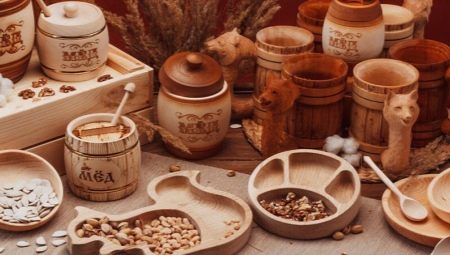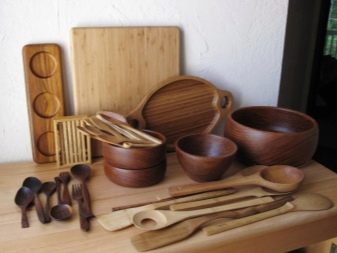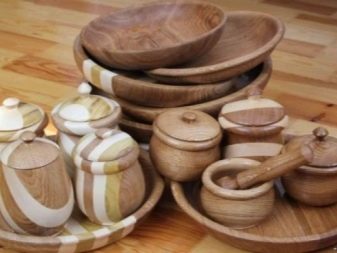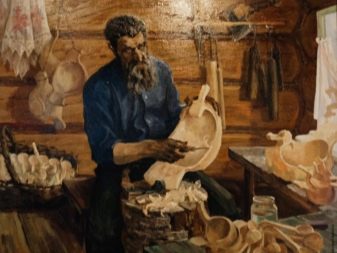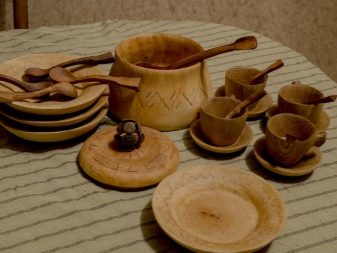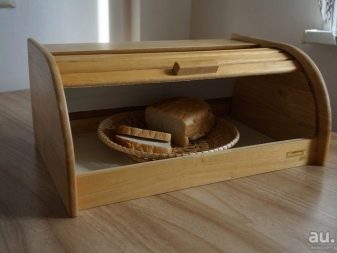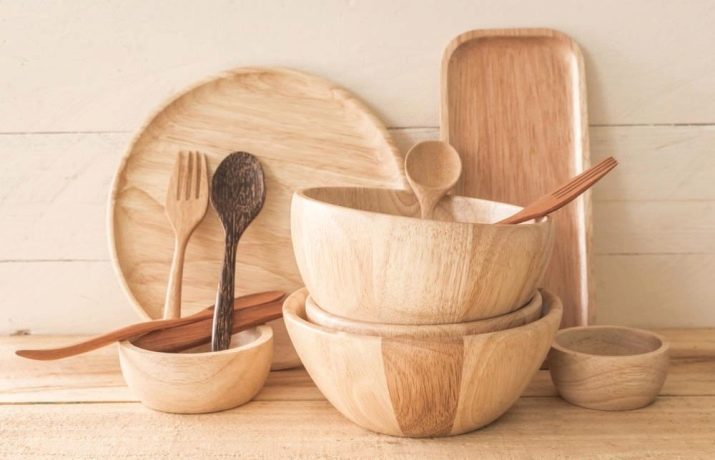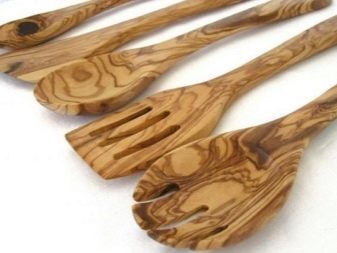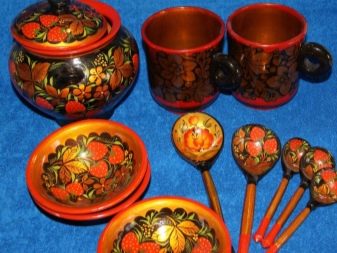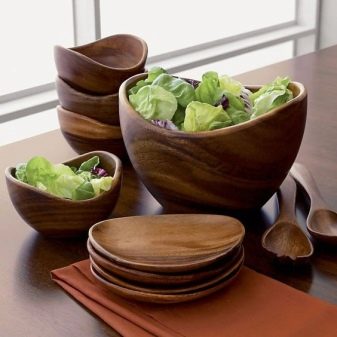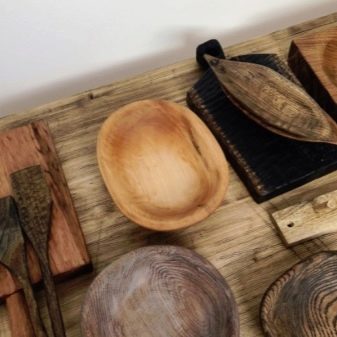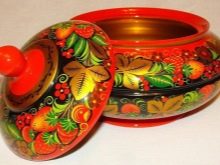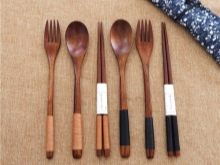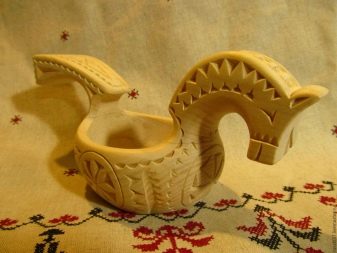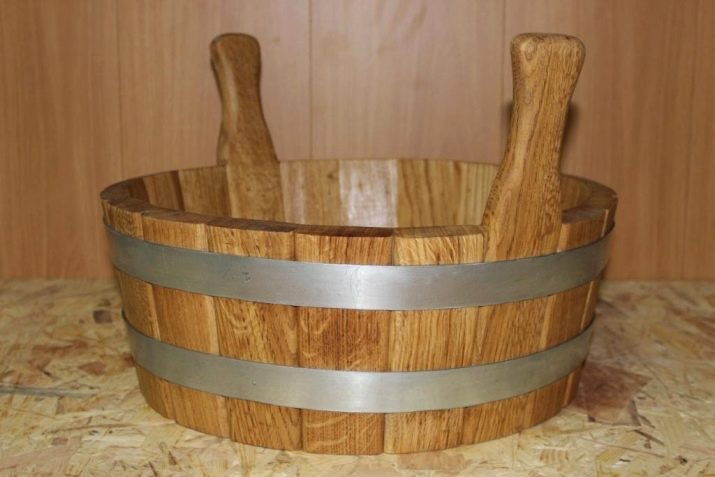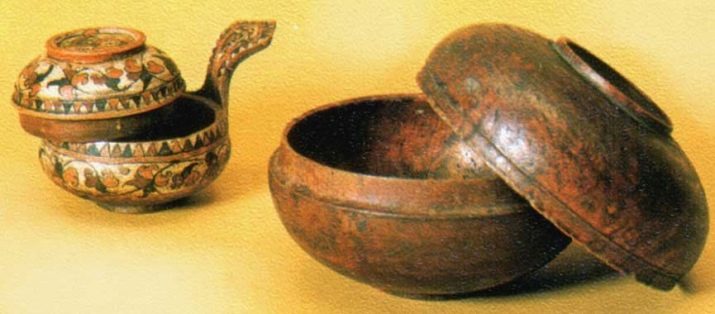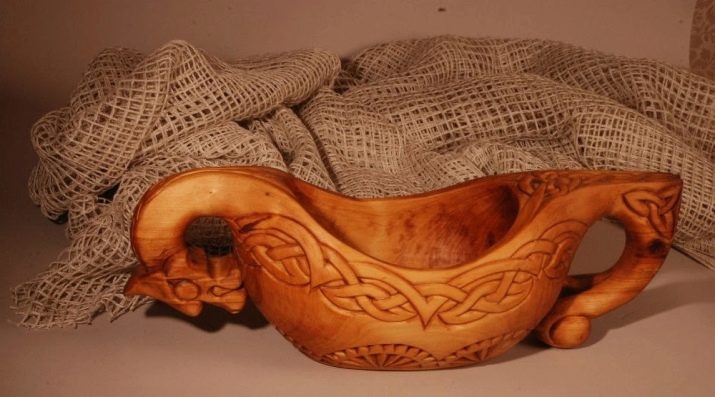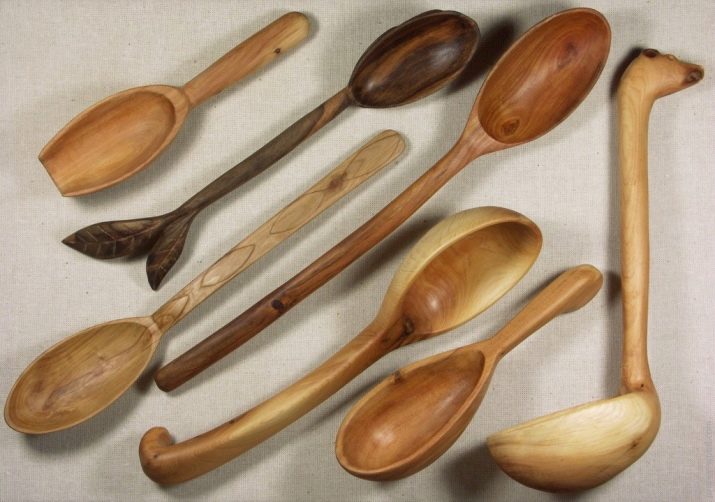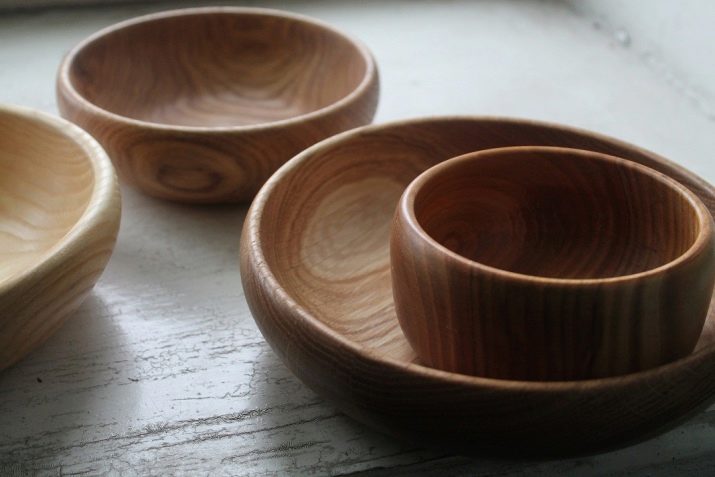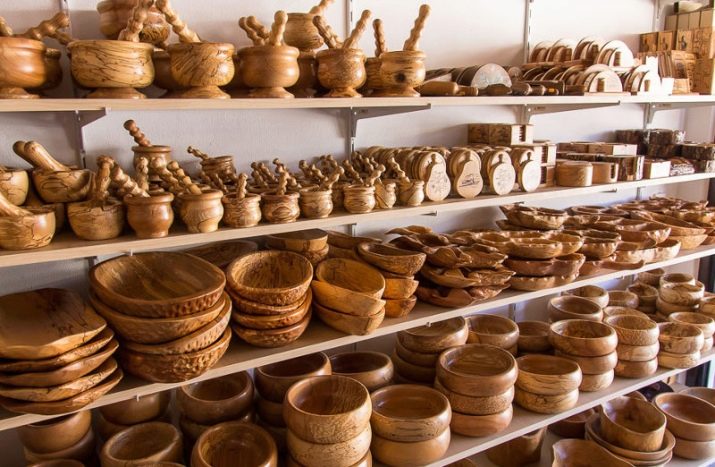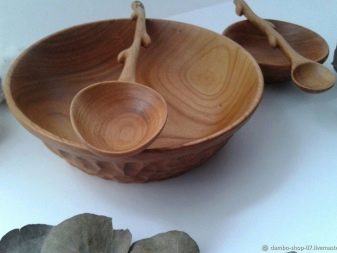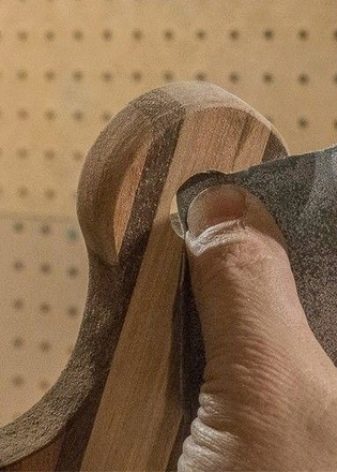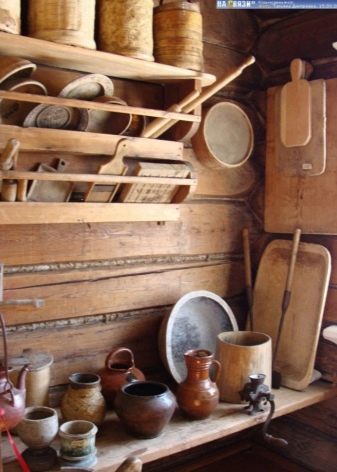Wood is one of the first materials that a person has mastered. It is simple to process, versatile and looks beautiful, so it is not surprising that the first dishes were made from it.
A bit of history
Wood was made in Ancient Russia most of the kitchen utensils and not only. As archaeological finds showed, in the 8th century, wooden ware was a great success. The most expensive specimens had decorative carvings on the outside.
Hardwood was used as a base because this material has the necessary properties. There were several manufacturing methods. Utensils were represented by several types:
- turned;
- dugout;
- sliced;
- cooper;
- from rivets;
- collected hoops.
More common was turned ware, it was not only mugs, but also plates, spoons, mortars and much more. The farm used wooden basins, tubs. Craftsmen kept their secrets and passed them from generation to generation.
There is one more advantage to wooden utensils - it was accessible to everyone, regardless of position.
Spoons were presented in a wide variety, they differed in shape, as one was used for salad, the other for soup, and the third - separately for mustard or dessert.
Today, this type of dishes are no longer very popular and are more decorative items in the kitchen. However, sugar bowls, bread bins, potato mash tolkushki and cutting boards are indispensable accessories for modern hostesses.
Advantages and disadvantages
Long before the first silver fork was invented, people feasted on primitive wooden cutlery. The longevity of silver tablespoons and forks, as well as the easy recycling of plastic devices, eventually pushed wood products aside.
However, now, in the era of energy efficiency and energy saving, wooden cutlery has returned to everyday life, although they are not as durable and hygienic as metal counterparts, wooden utensils are valued for its safety.
Of the benefits can be identified a number of factors.
- Wood is a natural material.
- Wood is a renewable resource. For example, bamboo products are very eco-friendly, however, the plant itself quickly fills the cut down area.
- Compared to oil, non-degradable plastic devices that overwhelm the world's landfills, wood is safe for humans.
- Such products can be made from any type of solid wood, including birch and maple.
- Recycling wooden cutlery helps solve the growing problem of recycling plastics and other non-degradable and hazardous materials that are already in large quantities in the soil.
- Wood cutlery can be very beautiful and costly if painted.
Despite this number of advantages, there are wooden products and their disadvantages.
- Wood is an absorbent, porous material that absorbs moisture, so it is a great breeding ground for bacteria. For this reason, wooden cutlery is unhygienic and unsuitable for long-term use.
- Cookware made from certain types of wood, such as cedar or cypress, can spoil the taste of food with its strong smell and pitch.
- Wood cutlery made from by-products, imported or processed wood may be exposed to chemicals during production.
- Most of these cutlery are carefully ground for safe use. When the material dries out, cracks may form on its surface, respectively, small chips that stick into the oral cavity appear.
- Such products are short-lived, and with improper use and storage can last only a few months.
Varieties
Painted set of dishes for the kitchen, made of wood, with painted Khokhloma on both sides - a work of art. Such a product can only play a decorative role and not be used. To organize an unusual kitchen interior, you can’t think of a better addition, since such utensils add color.
Looking for something unusual on the market you can see wooden products in a wide variety. Here are the dishes of the following manufacturers:
- Russian;
- Finnish;
- Chinese
- japanese
Each type presented has its own characteristics. For example, Japanese is ideal for sushi. It is radically different from the Finnish and Russian form, design, sawing.
Sometimes plates and spoons are made from olive wood, more often from other hardwoods. The quality of wood depends on the cost of such products. Carved, on which there is a painting, is expensive and suitable only as a gift set. The harder the thread, the more expensive such a gift. On certain platforms for sale old dishes.
You can find products for honey and even disposable plates and spoons on the market, but they are practically not popular.
Separately, it is necessary to mention the types of wooden utensils that were used in Russia. To list everything is difficult, but you can dwell on those that are most often used in the economy.
- Tub. This capacity was necessary for storing wine and honey, sometimes water was carried in it, it was allowed to drink. The main material used was the trunks of trees such as birch and aspen. The cap had a cylindrical shape, on top of it there were small “ears”, from which such a name appeared.
- Stavets. A kind of plate with a lid and a flat bottom. It was used not for serving dishes, but for storing bread and other kitchen utensils.
- Bratina Such a jug could often be found on the table, since it was served to the guests along with a drink. There were always mugs and plates with a snack around it.
- Spoons. Products we were used to were very different from those that were made at the very beginning. After the archaeological excavations in the Urals, specimens of a very unusual shape were found. Antique dishes differed decorative beauty, carved in the form of birds and animals. Historians have called many types of spoons, which differed in form among themselves, were fishing, mezheumki, polubaski and rubbing.
It was proved that the production of wooden utensils represented even then a whole industrial process. In one village they were engaged in blanks, in the other - tuck, in the third - grinding.
- Buckets There were also several types of them. The name was taken from the place where the item was made. For example, the Moscow and Tver buckets were popular, there were also Kostroma, Volgograd and others. Most often, you could meet buckets on the holiday table, because they served food. Moscow products were different from all other materials, because they were made from a mouthpiece. From the side, such dishes were very much like a boat with a flat bottom and a pointed nose. One could only envy the strength of such a product, the wall thickness reached 0.8 cm. Tver's dippers differed from Moscow, which were made from the root. Such utensils were low, long and had a decoration on the end in the form of a horse's head.Masters did not stint on the design of the thread.
- Plates. They are also presented in a wide variety. There were deep and shallow, big and small. When the princes decided that serving food to them on a table in a dish with which commoners also eat is a manifestation of disrespect, wooden utensils are replaced by silver and gold products.
How to choose?
When choosing a quality product you should rely on the advice of professionals, since there are many models on the shelves in stores, and not all of them meet the requirements of safety and durability.
- If you buy such an item for the kitchen, it is better if it is made on the territory of our country. These products are checked for quality and environmental safety.
- Be sure to carefully inspect the dishes so that the impregnation is applied evenly. If the model is lacquered, then it is not suitable for use during cooking.
- Any kind of deformation should be absent on the surface, because if the moisture gets there, the wood will crack.
- The best dishes are those made from juniper and alder, and also cedar, aspen.
Terms of use
Often, wooden products are purchased for restaurants, as they are suitable for serving unusually decorated tables. For such dishes to serve for a long time, you need to know and follow the rules for its use.
Putting in a microwave wood plates, the main thing is not to cook in them, but only to warm up the food. Since the material absorbs moisture and is able to expand or dry over time, such utensils lose their attractiveness over the years.
For this reason, such products should be impregnated with a special oily solution, which closes the pores and prevents the penetration of moisture inside.
It is strictly forbidden to wash such dishes in the dishwasher, as this will result in a rough surface.
Care features
If wooden products are properly cared for, then they will last a long time.
- Unpleasant smell, which absorbs wood, is eliminated simply. To do this, once a month, wipe the spoons and plates with gauze or vinegar soaked in alcohol.
- Tannins in wood are easily eliminated by soaking utensils in plain water for several hours.
- To level the surface of the cutting board can be a simple emery paper.
- Rubbing onion peels with a decoction or hydrogen peroxide allows you to increase the service life of wooden utensils.
- After using the plate, spoons must be immediately rinsed and wiped dry.
- Such utensils are stored in a well-ventilated cabinet, where there is no high humidity.
How to make a plate of pine, see the following video.
